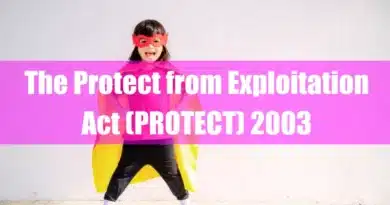The Debbie Smith Act 2004 & Reauthorizations
Takeaways
| Key Points |
|---|
| The Debbie Smith Act of 2004 was enacted to address the backlog of untested DNA evidence in crime laboratories across the United States, ensuring timely justice for victims and preventing offenders from evading capture. |
| Named after Debbie Smith, a survivor of sexual assault whose attacker was identified through DNA testing six years after the crime, the Act established the Debbie Smith DNA Backlog Grant Program to provide federal funding for forensic labs to expedite DNA analysis. |
| The Act includes key provisions such as reducing DNA backlogs, expanding the Combined DNA Index System (CODIS), offering legal assistance to survivors of dating violence, and allocating $151 million annually from 2005 to 2009 for local and state governments to process forensic evidence. |
| Additionally, it allows alternative use of grants for other forensic science backlogs if a state demonstrates control over its DNA backlog, permits outsourcing to private labs through vouchers and contracts, and amends the DNA Identification Act of 1994 and the Violence Against Women Act of 2000 to expand protections and database entries. |
| These provisions have significantly improved the efficiency of DNA evidence processing, aiding criminal investigations, securing convictions, and exonerating the innocent while reinforcing public trust in the justice system. |
Introduction
Overview of the Debbie Smith Act of 2004
The Debbie Smith Act of 2004 was enacted to address the backlog of untested DNA evidence in crime laboratories across the United States. Named after Debbie Smith, a survivor of sexual assault whose attacker was identified through DNA evidence six years after the crime, the Act focuses on enhancing the capacity of forensic labs to process DNA evidence more efficiently.
It established a dedicated grant program to reduce the DNA backlog, crucial for solving crimes and exonerating the innocent.

Purpose and Significance of the Act
The primary purpose of the Debbie Smith Act is to expedite the processing of DNA evidence to ensure timely justice for victims and improve the overall effectiveness of the criminal justice system. The Act has significantly impacted how DNA evidence is managed, particularly in sexual assault cases, where timely DNA testing can lead to quicker apprehension of offenders and provide closure to victims.
Background and Origins
The Case of Debbie Smith and Its Impact
Debbie Smith was a victim of a violent sexual assault in 1989. Her case became symbolic of the struggles faced by victims when there was a delay in DNA testing. It took six years before the DNA evidence collected from her case was processed, which finally led to the identification and conviction of her attacker.
Her story highlighted the critical need for timely DNA testing and played a pivotal role in shaping public and legislative awareness of the backlog issues.
Legislative Motivations and Initial Drafting Process
The legislative push for the Debbie Smith Act began with a focus on clearing the backlog of DNA evidence in forensic laboratories. Lawmakers recognized the inefficiencies in the processing of DNA samples, which delayed justice for victims and allowed perpetrators to evade capture.
The Act was drafted to allocate federal funds to support state and local forensic laboratories, ensuring they had the resources necessary to analyze DNA evidence promptly.

Provisions of the Debbie Smith Act of 2004
Establishment of the Debbie Smith DNA Backlog Grant Program
One of the central provisions of the Debbie Smith Act is the creation of the Debbie Smith DNA Backlog Grant Program. This program provides federal funding to state and local crime laboratories to process DNA samples, particularly in cases of sexual assault, to reduce the backlog of untested evidence.

Key Provisions for Improving DNA Evidence Processing
The Debbie Smith Act includes several key provisions to improve the efficiency of DNA evidence processing. These provisions are central to addressing the backlog of untested DNA evidence, particularly in sexual assault cases. Here are the main provisions:
- Addressing DNA Backlogs: The Act reduces the backlog of DNA samples collected from crime victims and offenders. This ensures that DNA evidence is processed more quickly, aiding criminal investigations.
- Expanding CODIS: The Act broadens the range of DNA samples that can be included in the Combined DNA Index System (CODIS), a national database used to help solve crimes by matching DNA profiles.
- Support for Legal Assistance: It provides legal help to survivors of dating violence, extending protections and support services to a wider group of victims.
- Grants for Local Governments: The Act allows local governments to receive grants under the Debbie Smith DNA Backlog Grant Program. This funding, which totals $151 million yearly from 2005 to 2009, helps states and local governments conduct DNA analysis on backlogged samples.
- Broadening Eligibility: It expands the types of organizations that can receive these grants to include more local government units, not just state-level entities.
- Alternative Forensic Sciences: If a state or local government can show that its DNA backlog is under control, it can use grants for other forensic science backlogs to ensure that future DNA evidence can be processed on time.
- Use of Vouchers and Contracts: The Act allows vouchers or contracts to hire outside labs to help reduce the backlog of DNA evidence.
- Amending Previous Laws: The Act amends the DNA Identification Act of 1994 to include DNA samples from individuals charged with crimes in CODIS and the Violence Against Women Act of 2000 to extend legal assistance to survivors of dating violence.

These provisions have played a crucial role in improving the processing of DNA evidence and ensuring that justice is served more efficiently in cases of sexual violence and other serious crimes.
Reauthorizations and Amendments
2008 Reauthorization
This reauthorization amended the DNA Analysis Backlog Elimination Act of 2000, authorizing $151 million yearly from 2009 through 2014 for grants to eligible states and local governments. These funds aimed to conduct DNA analyses of backlogged samples from victims and offenders.
Additionally, the 2008 reauthorization amended the DNA Sexual Assault Justice Act of 2004 to extend training and education programs for law enforcement, correctional personnel, and court officers until 2014. It allocated $12.5 million annually from 2009 to 2014 for training, technical assistance, and education on identifying, collecting, preserving, and analyzing DNA evidence. Furthermore, the Act continued funding for sexual assault forensic exam program grants, with $30 million authorized annually through 2014. These grants supported training and education for professionals involved in the forensic examination and handling of DNA evidence.

2014 Reauthorization
On March 27, 2014, the Debbie Smith Reauthorization Act of 2014 was introduced in the House. This bill aimed to reauthorize funding through Fiscal Year 2019 for the Debbie Smith DNA Backlog Grant Program, sexual assault forensic exam program grants, and DNA training and education for law enforcement, correctional personnel, and court officers. The bill authorized the appropriation of approximately $968 million over the 2015–2019 period, primarily aimed at states to help analyze DNA samples from crime victims.
Debbie Smith, the namesake of the law, strongly supported this bill, emphasizing its importance for victims of rape by stating, “These aren’t rape kits that need to be tested; these are lives that need to be given back to their owners.” The bill received widespread support in Congress, with Rep. Carolyn Maloney (D-NY) highlighting its potential to help put real criminals behind bars and protect the public from traumatic assaults. Rep. Bob Goodlatte also praised Debbie Smith’s courage. He stressed the importance of passing the bill quickly to ensure DNA analysis was completed promptly, thereby preventing sexual predators from harming more women.
2019 Reauthorization
In 2019, the Debbie Smith Reauthorization Act of 2019 was signed into law by President Trump. This reauthorization continued to provide funding aimed at reducing the backlog of untested rape kits in the United States. At the time, more than 100,000 rape kits remained untested, highlighting the ongoing need for federal support to address this issue.

Impact of the 2004 Act
Reduction in DNA Backlog in Crime Laboratories
Since its implementation, the Debbie Smith Act has substantially reduced the DNA backlog in crime laboratories across the United States. The increased funding and resources provided by the Act have enabled laboratories to process more DNA samples quickly, significantly decreasing the number of untested kits. The Act has helped, but the backlog issue is ongoing.
Improvements in Criminal Investigations and Prosecutions
The Act has greatly improved the speed and accuracy of criminal investigations and prosecutions. By processing DNA evidence more timely, law enforcement agencies can solve cases faster and more accurately.
This has not only helped in apprehending perpetrators but has also played a crucial role in exonerating wrongfully convicted individuals.
Case Studies
Here are the case studies about the Debbie Smith DNA Backlog Grant Program:
- CBS News and Human Rights Watch Investigations: Both CBS News and Human Rights Watch conducted investigations revealing that, despite five years of federal funding, many states and counties still had significant backlogs of untested rape kits. In fact, some areas saw these backlogs increase even after receiving grants.
- Untested Rape Kits in Major Cities: A 2009 investigation by CBS News found that at least 20,000 rape kits were still untested in four major U.S. cities. Additionally, twelve other major cities could not even determine how many rape kits were left untested in their storage facilities.
- Los Angeles City Crime Lab Audit: In October 2008, an audit by Human Rights Watch showed that the backlog of rape kits in Los Angeles had grown from 5,000 in January 2007 to 7,300 by July 2008, despite receiving nearly $4 million in grants from the Debbie Smith DNA Backlog Program. A later audit in February 2009 estimated the backlog to be around 5,193 kits.
- Successes of the Debbie Smith Act: According to ABC News, the Debbie Smith Act has led to significant progress since 2004, with almost 200,000 sexual offenders being identified. Additionally, over 40% of all DNA matches since 2005 were made possible due to the resources provided by the grant money.
- National Institute of Justice (NIJ) Research: The NIJ, part of the U.S. Department of Justice, conducted research showing that the backlog of DNA evidence has continued to grow. They tracked two main types of DNA evidence: “casework” DNA, which comes from crime scenes, victims, and suspects, and “convicted offender and arrestee” DNA, which is collected according to legal requirements.
- Casework DNA Backlog: A 2010 survey by the NIJ found that the nationwide backlog of casework DNA samples exceeded 111,500, a sharp increase from the 38,000 backlogged cases identified in a 2005 survey.
- Convicted Offender and Arrestee DNA Backlog: The backlog for convicted offender and arrestee DNA samples was even more significant. A 2009 NIJ study reported that by the end of the year, the backlog had reached over 950,000 samples, nearly the total capacity for crime labs across the country in a year.

Challenges and Criticisms
Ongoing Issues with Backlog Despite the Act
Despite the Debbie Smith Act’s successes, fully eliminating the DNA backlog remains challenging. Some laboratories face significant backlogs due to increased demand for DNA testing, limited resources, and other operational challenges.
Critiques from Law Enforcement and Legal Communities
Some law enforcement and legal professionals have criticized the Act, arguing that it has not fully addressed the systemic issues contributing to the DNA backlog. Critics have called for more comprehensive reforms to improve the efficiency and effectiveness of DNA testing and ensure that all victims receive timely justice.

Efforts to Address Shortcomings in the Act’s Implementation
Efforts have been made to address the shortcomings in the Act’s implementation, including increased oversight and accountability, improved training and support for forensic scientists, and adoption of new technologies to enhance DNA testing capabilities.
The Role of Technology and Innovation

Technological Advancements in DNA Testing Since 2004
Since the passage of the Debbie Smith Act, there have been significant technological advancements in DNA testing. New technologies have made it possible to analyze DNA samples more quickly and accurately, leading to faster processing times and more reliable results.
How Technology Has Enhanced the Effectiveness of the Act
Adopting advanced DNA testing technologies has greatly enhanced the effectiveness of the Debbie Smith Act. These technologies have enabled forensic laboratories to process larger volumes of DNA evidence, reduce backlogs, and improve the overall quality of forensic analysis.
Future Outlook and Potential Reauthorizations

Possible Future Amendments and Funding Extensions
As the need for DNA testing continues to grow, there is likely to be a continued push for reauthorizations and amendments to the Debbie Smith Act. Future amendments may focus on expanding the scope of the Act, increasing funding, and introducing new provisions to address ongoing challenges in DNA testing and backlog reduction.
Possible Future Amendments and Funding Extensions
The Debbie Smith Act will likely see further amendments and funding extensions as DNA technology evolves. Future amendments may include increased funding for advanced DNA testing technologies, such as Rapid DNA analysis and Next-Generation Sequencing (NGS), allowing quicker and more comprehensive testing.
These technological advancements could also lead to updated standards and protocols for DNA evidence collection and testing, ensuring consistency across jurisdictions.
The Ongoing Need for Reforms in DNA Evidence Processing
Despite the progress made under the Debbie Smith Act, there remains a continuous need for reforms in DNA evidence processing. Persistent backlogs in some jurisdictions indicate that additional measures are necessary to optimize forensic laboratory operations.
Future reforms could focus on integrating more automated processes, improving data management systems, and expanding training programs for forensic professionals to keep pace with technological advancements and ensure the highest accuracy and efficiency in DNA testing.
FAQ
What is the primary goal of the Debbie Smith Act of 2004?
The Debbie Smith Act of 2004 aims to eliminate the backlog of untested DNA evidence in crime laboratories across the United States, ensuring timely processing to aid in criminal investigations and prosecutions.
How does the Act support forensic laboratories?
The Act provides federal grants to state and local governments to conduct DNA analyses of backlogged samples, enhancing the capacity of forensic labs to process DNA evidence more efficiently.
Who was Debbie Smith, and why is the Act named after her?
Debbie Smith is a sexual assault survivor whose attacker was identified through DNA evidence six years after the crime, highlighting the critical need for timely DNA testing.
What significant amendments were made in the 2008 Reauthorization?
The 2008 Reauthorization extended funding for DNA backlog reduction programs through fiscal year 2014 and expanded training and education grants for law enforcement and forensic personnel.
How did the 2019 Reauthorization impact the Act?
The 2019 Reauthorization provided continued funding to help eliminate backlogs in rape kit testing, addressing the issue of over 100,000 untested rape kits in the United States.
What is the Combined DNA Index System (CODIS), and how is it related to the Act?
CODIS is a national database that stores DNA profiles; the Act expanded the types of DNA samples included in CODIS to aid in solving crimes.
Does the Act provide support for victims of dating violence?
Yes, the Act amends the Violence Against Women Act of 2000 to broaden the type of survivors eligible for legal assistance to include survivors of dating violence.
How much funding was authorized annually under the Act?
The Act authorized the appropriation of $151 million annually for fiscal years 2005 through 2009 to support DNA analysis and backlog reduction efforts.
What provisions are there for using grants for non-DNA forensic backlogs?
If a state or local government certifies that no significant DNA backlog exists, grants may be used to address other forensic science backlogs.
How does the Act facilitate outsourcing to private laboratories?
The Act allows for the use of vouchers or contracts to hire outside labs to assist in reducing the backlog of DNA evidence.
What impact has the Act had on the processing of rape kits?
Since its enactment, the Act has contributed to the processing of numerous backlogged rape kits, leading to the identification of offenders and the exoneration of the innocent.
How does the Act support training for law enforcement and forensic personnel?
The Act provides grants for training, technical assistance, and education regarding identifying, collecting, preserving, and analyzing DNA samples and evidence.
What challenges have been identified in the implementation of the Act?
Despite significant funding, some jurisdictions have continued to experience backlogs in DNA evidence processing, indicating ongoing resource allocation and management challenges.
How has the Act evolved through its reauthorizations?
The Act has been reauthorized multiple times, with each reauthorization extending funding and expanding provisions to address emerging challenges in DNA evidence processing and victim support.
What is the current status of the Debbie Smith Act?
As of 2024, the Debbie Smith Act has been reauthorized through fiscal year 2029, continuing its support for DNA backlog reduction and related initiatives.









